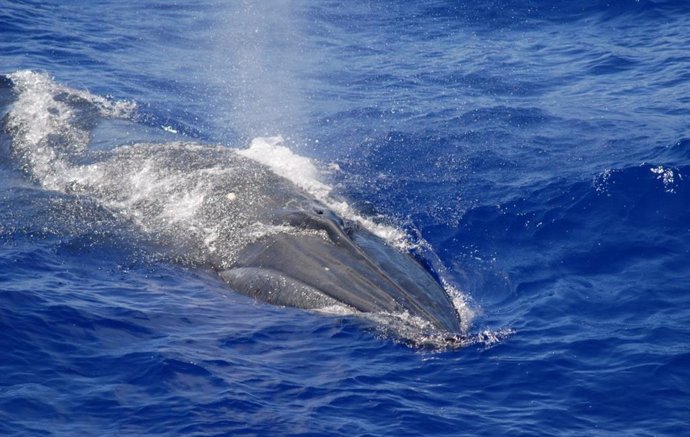Bryde’s whale – NOAA
September 20 () –
NOAA Fisheries, the US ocean and climate agency, has identified Bryde’s whales as the source of a new whale song in the western North Pacific.
The researchers worked with Google AI and used machine learning Automatic to classify thousands of hours of recordings acoustics and identify when and where these songs occur.
In 2014, a study of autonomous sea gliders at Oregon State University in the Mariana Islands heard a new sound: a mechanical-sounding whale vocalization. They called it “Biotwang”. With no visual observers to identify the source of the sound, they assumed it might be emitted by a baleen whale, but they could not determine the species, NOAA reports.
In 2018, NOAA scientists were conducting a visual and acoustic survey of marine mammals in the Mariana Islands. During the month-long survey, they detected 10 different groups of Bryde’s whales. In nine of those groups they also recorded Biotwangs, solving the mystery of the source of the unique call..
HEARING EVERYTHING WOULD HAVE TAKEN 23 YEARS
NOAA scientists use long-term passive acoustic recorders to monitor the health and status of marine mammal populations, particularly in remote and hard-to-reach locations. In the North Pacific, bottom-mounted data recorders have been installed at 13 locations since 2005. These recorders have captured more than 500 TB of data, or nearly 200,000 hours of recordings. Listening to all that audio would take nearly 23 years. Because the Biotwang had not been identified before, Scientists had no idea where they might find it in this sea of data.
To meet the challenge, the researchers worked with Google to use AI and machine learning to analyze the vast data sets of passive acoustic monitoring. With the help of AI and machine learning, they were able to identify where and when the Biotwangs were recorded in the previous acoustic data. Thanks to AI, this was achieved in a matter of hours, rather than years. The results of this research were recently published in Frontiers in Marine Science.
This model was part of an open-source multi-species marine mammal vocalization machine learning classification model. It allowed recordings to be analyzed quickly and efficiently and with a higher level of accuracy than available with traditional methods.
The team identified a consistent seasonal presence of Biotwangs only in the Mariana Archipelago and to the east on Wake Island. This suggests that the Biotwang may be a specific call of a population of Bryde’s whales in the western North Pacific. Knowing that Biotwangs are produced by a specific population helps to monitor the distribution of that population.
The seasonal occurrence of biotwangs is consistent with migration of these whales between low and mid-latitudes. There is a small peak between February and April, and a larger peak between August and November, when the whales pass by the recording sites. These peaks vary from year to year.There were many biotwangs in 2016, during a strong El Niño year, and almost none were heard in 2021, a La Niña year. Researchers believe the whales may be feeding along ocean currents that are strongly influenced by the Pacific Decadal Oscillation.
As climate change progresses, more frequent and extreme El Niño and La Niña years may cause the productive current to shift poleward and become more variable, the team said. This means whales will have to travel farther and work harder to find their food, which can affect the health of the population.
















Add Comment